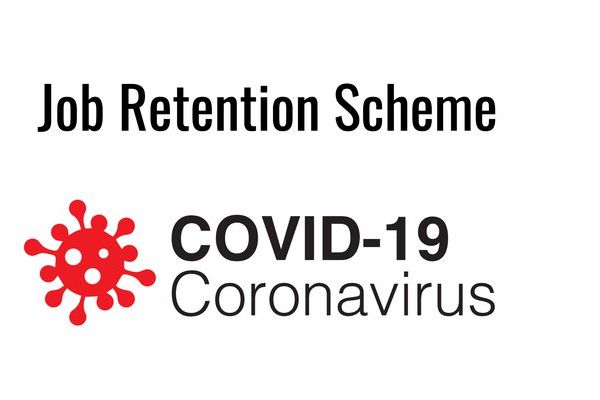Coronavirus Job Retention Scheme: Update
On Friday 29th May, Chancellor Rishi Sunak announced in further detail the changes that will be made to the Coronavirus Job Retention Scheme (CJRS), following up on the announcement of an extension of the scheme on 12th May.
Changes by the month June - The government will continue to pay 80% of wages capped to £2500 per month per employee, as well as employer National Insurance (ER NICs) and pension contributions. Employers will not be required to pay anything.
July - Like in June, the government will pay 80% of wages capped to £2500 per month per employee, as well as ER NICs and pension contributions. As well as this change, from 1st July 2020, businesses will be given the flexibility to bring back furloughed employees back part time. Employers will be responsible for paying their staff whilst they are in work, see below.
August - The government will pay 80% of the wages capped to £2500 per month per employee, just like in June and July. However, employers will pay ER NICs and pension contributions.
September - The government will pay 70% of wages capped to £2187.50. Employers will pay ER NICs and pension contributions. As well as paying this, employers will also pay 10% of wages to make up 80% total up to a cap of £2500.
October - The government will pay 60% of wages capped to £1875. Employers will pay ER NICs and pensions contributions and 20% of wages to make up 80% total up to a cap of £2500.
Flexible Furloughing
As stated above, from 1st July 2020, employers can bring employees back to work for any amount of time and any shift pattern. All normal hours not worked can still be claimed via the CJRS grant but will need to report and claim for a minimum period of a week. Those making claims for longer periods, i.e. two weeks or a month, can still do so, this is only a minimum period.
To enable the introduction of part time furloughing, claims from July onwards will be restricted to employers currently using the scheme and previously furloughed employees. The scheme will close to new entrants on 30th June, with the last three-week furloughs before that point commencing on 10th June. Employers will have until 31st July to make any claims in respect of the period to 30th June. Employers must also agree with their employees any new flexible furloughing arrangement and confirm this arrangement in writing.
Employers will need to report the hours worked and the usual hours an employee would have done, had they not been furloughed. For the worked hours, employees will be paid by their employers, of which the employers will be responsible for paying any tax and NICs due on those amounts.
Further information of flexible furloughing will be published on 12th June 2020.
Changes to CJRS V1 – An introduction to CJRS V2
From 1st July 2020, claims periods will no longer be able to overlap calendar months. This is so that the changes stated in ‘Changes by the month’ can be reflected in the forthcoming months. Employers will also not be able to exceed the number of employees already claimed for in previous claims under CJRS V1.
If you have any queries about any of the above, please do not hesitate to contact us on 01273 771122 or visit HMRCs website for more helpful information.
Changes to the Self Employment Income Support Scheme Extended to August
The Self Employment Income Support Scheme (SEISS) is to be extended to August 2020, as many sole traders remain unable to work due to COVID-19 restrictions. Last week the Chancellor Rishi Sunak announced that a second payment will be available to sole traders via the SEISS, with applications to be opened in August to cover the months of June, July and August.
To be eligible, sole traders will not need to have claimed the first SEISS grant that was available from May, but the main eligibility criteria will remain the same as before:
- you traded in the tax year 2018 to 2019 and submitted your Self Assessment tax return on or before 23 April 2020 for that year
- you traded in the tax year 2019 to 2020
- you intend to continue to trade in the tax year 2020 to 2021
- you carry on a trade which has been adversely affected by coronavirus
The second payment will be calculated at a slightly lower rate of 70% of 3 months trading profits, rather than the 80% that was available for the first grant. The cap on the grant has also been reduced from £7,500 to £6,750. These reductions will keep the SEISS scheme in line with the government’s furlough scheme for employers which will also be tapered off over the coming months.
Much as before, the applications will be made via your government gateway account, with HMRC looking to deposit your funds within 6 days of receipt of the application. This money will likewise be considered taxable income and must be included in your turnover figures for the tax year ending 5th April 2021.
The government hopes to publish further information on the second SEISS grant on the 12th of June. For now the guidance that has been released can be viewed here.
Topics
Archive
- 2024
- March 2024 (1)
- January 2024 (1)
- 2023
- December 2023 (2)
- November 2023 (2)
- September 2023 (2)
- August 2023 (1)
- July 2023 (3)
- June 2023 (3)
- May 2023 (2)
- April 2023 (1)
- March 2023 (4)
- February 2023 (2)

